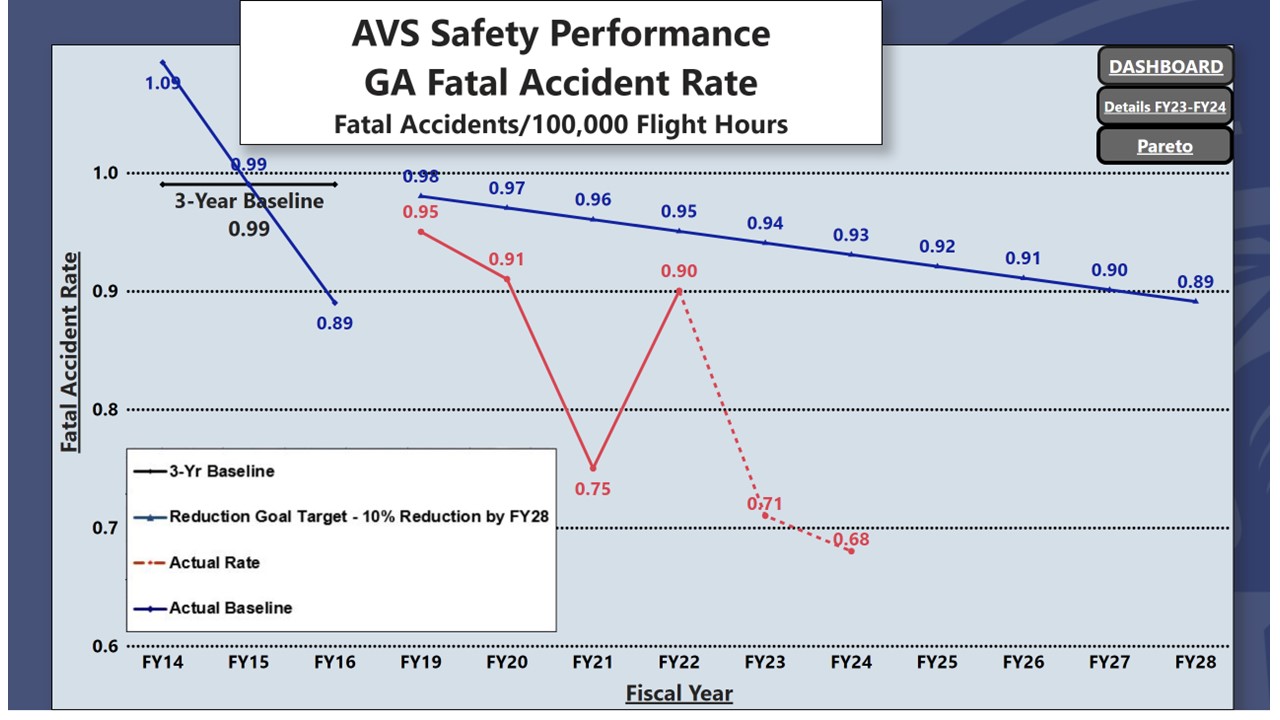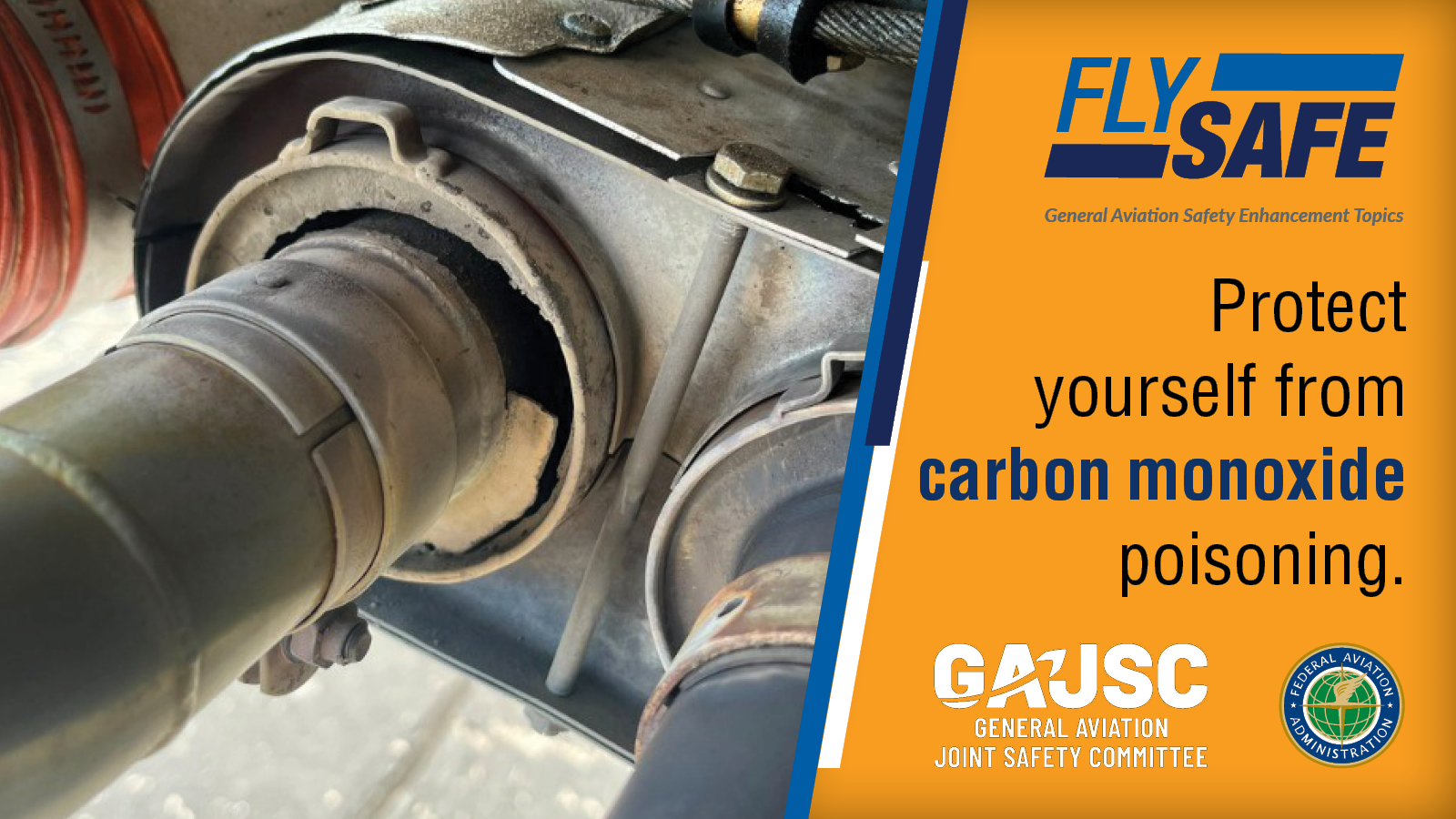|
|
|
|

|
|
|
|
Welcome to the latest edition of the General Aviation Joint Safety Committee's (GAJSC) new quarterly newsletter, the FlySafe Flyer! This newsletter is intended to keep you apprised of GAJSC-related news and updates, as well as relevant safety information that impacts the general aviation community. The FlySafe Flyer also aims to convey the GAJSC's purpose and collaborative role in advancing aviation safety. We encourage you to read and share this content with your fellow airmen. Please copy the link here to share. For a list of previous newsletters, go to gajsc.org/newsletter.
|
|
|
|
|
|
A Rose By Any Other Name ...
|
A Welcome Message from Kim Pyle, Executive Director of the FAA’s Office of Accident Investigation and Prevention, and GAJSC Co-Chair
|
|
|
|
Hello to GAJSC members and GA stakeholders. I think we can all agree that our general aviation (GA) sector is an essential transportation lifeline and a treasure that is unique in the world. Protecting this vital asset means always working toward a better safety record, and we can do that by emulating communities that have a Safety Culture foundation and operate using Safety Management Systems (SMS) principles. These communities — including airlines and some Part 135 and GA operators who have implemented voluntary SMS programs — follow best practices that could help cut risks in other sectors.
|
The recent SMS rule will require Part 135 and Part 91 Air Tour Operators to implement FAA-approved SMS programs. However, the rule excluded the bulk of GA and the hundreds of thousands of pilots who participate. Now there are good reasons why Congress did not issue an SMS mandate for “regular” GA, but there’s no reason GA can’t benefit from voluntarily embracing Safety Culture and SMS best practices. As Shakespeare put it so eloquently, “A rose by any other name would smell as sweet.”
|
What I see of the GA community through my work with the GAJSC is very promising. The GA fatal accident rate continues to decline year over year even faster than our reduction goals. I like to think that is directly related to the hard work by the incredibly talented and committed safety advocates in government and industry. Through the GAJSC, they’ve studied the data and delivered dozens of safety enhancements and timely studies and analyses that are shared with the community to help recognize and mitigate risks.
|
The GAJSC gets it. The processes are in line with the Safety Culture and SMS concepts. But what about the broader GA community, the pilots and operators who’ve never heard of a…“GAJSC?” Here again, I’m optimistic. A well-known safety advocate in the General Aviation community, Tom Turner, publishes a weekly newsletter on GA safety. He generally starts with a topic in the GA news — typically an accident — and he analyzes the situation with the intent of providing helpful advice to the readers, who regularly write back with input on the topic for the next edition. In his August 29 edition, he answers a question posed by one of his readers: “What’s the riskiest thing you do in an airplane?”
|
This one question is rich with Safety Culture and SMS implications. A positive Safety Culture allows us to get the information we need to address the question, and SMS gives us the tools to mitigate and track the issues that will be uncovered by the answers. In his newsletters, Tom answers the questions expertly in a manner that pilots are used to seeing — here are the riskiest things I’ve seen, and here’s how I’ve mitigated them.
|
This is a great start! But consider how many additional benefits we might realize if we were to channel these kinds of discussions through a Safety Culture and SMS framework, even if we don’t use those titles specifically?
|
Let’s think about how we might help the broader GA community to embrace what Safety Culture and SMS have to offer. It matters not what we call this new safety paradigm — what matters are the results — saving lives and helping this vital community to thrive.
|
|
Kim Pyle – GAJSC Co-Chair
|
|
|
|
|
|
General Aviation Safety Performance Summary for FY24
|

|
Here's a look at the GA fatal accident rate for fiscal year (FY) 2024. As you can see in the chart here, we ended FY2024 at 0.68 accidents per 100,000 flight hours, well below the yearly goal of 0.93. You can also see the total GA fatal accidents broken out by month in FY24 here.
|
|
For more details, see the Pareto chart on general aviation fatal accidents, which can be customized to display a specific date range of accident data and sort results by aircraft classification, FAR part, operational category, and accident category.
|
|
|
|
|
|
Recent Fly Safe Topics Cover Short Field Operations, Weather Information, and GA Exhaust System Safety/CO Poisoning
The August Fly Safe topic reviews best practices on obtaining and using weather information for your flight.
|
Do you have a CO detector installed in your aircraft, or carry one on board with you when you fly? Do you thoroughly inspect your exhaust system every 100 hours? The September Fly Safe topic looks at likely sources of a carbon monoxide hazard, some common themes from both accidents and from successful landings, and what actions you can take to mitigate your own risk.
|
|
FlySafe topics are monthly outreach focus areas designed to support and promote the GAJSC's data-driven safety mitigation strategies, or Safety Enhancements.
|
|

|
|
|
- October — Vestibular Illusions: Understanding the dangers of vestibular illusions (e.g., graveyard spiral) and best practices for coping with them.
- November — Overreliance on Automation: Learn how an overreliance on automation can inhibit terrain awareness.
- December — Flight Data Monitoring: Learn about the safety benefits of flight data monitoring and how it can help identify emerging problems before they happen.
|
|
|
|
|
New Safety Culture and Ethics Course Now Available on FAASafety.gov
|
A new course now available on the FAASTeam website (FAASafety.gov) allows pilots to learn some fundamental concepts about ethics and safety culture and apply them to real-world situations in general aviation. The course (ALC-1175) also provides a working model for a GA pilot’s Code of Ethics and explains how ethics are the foundation for a positive safety culture in aviation. Also covered is the FAA’s Compliance Program, where the agency seeks to fix problems rather than penalize pilots. The course is WINGS credit eligible so be sure to log into your account first to receive credit.
|
|
|
|
|
|
|
|
FAA releases new Data Viz Chart for From the Flight Deck Video Series
The FAA’s From the Flight Deck (FTFD) video series provides pilots with actual runway approach and airport taxiway footage captured with aircraft-mounted cameras, combined with diagrams and visual graphics to clearly identify hot spots and other safety-sensitive items at airports.
|
|
To help viewers find locations of the 130-plus videos, an interactive map was created on the FTFD landing page at faa.gov/flight_deck and was recently updated as a data visualization chart. This chart shows a map of the United States and includes filter and search options that let users customize their search by state, city, airport name, airport ID, and safety product to easily access FTFD videos and other content like Arrival Alert Notices.
|
|
|
|
|
|
|
|
Safety Enhancement Spotlight — Angle of Attack
The GAJSC analyzes general aviation (GA) safety data to develop intervention strategies to prevent or mitigate problems associated with accident causes, called Safety Enhancements (SE). These SEs may include procedures, training, and equipment installations that, when implemented, may reduce the likelihood of accidents in the future.
|
In this issue of FlySafe Flyer, we'd like to introduce SE 01 and SE 02 that are related to angle of attack indicators:
|
|
SE–1 Angle of Attack Systems—New and Current Production Aircraft
|
SE–2 Angle of Attack Systems—Existing GA Fleet
|
Among the objectives with these SEs are to:
|
- help the GA community understand the safety benefits of AOA systems via a public education campaign,
- encourage GA aircraft manufacturers to develop cost-effective AOA installations for new and existing designs currently in production,
- and to encourage owners and operators of GA aircraft to have AOA systems installed in their aircraft in order to reduce the risk of inadvertent stall/departure resulting in LOC accidents.
|
Please see the GAJSC SE page here for more information.
|
|

|
|
|
|
|
GAJSC Member Profile — AOPA
Formed in 1939, the Aircraft Owners and Pilots Association (AOPA) is a Frederick, Maryland-based American non-profit political organization that advocates for general aviation. AOPA exists to serve the interests of its members as aircraft owners and pilots and to promote the economy, safety, utility, and popularity of flight in general aviation aircraft. See the AOPA website for more information. See here for a list of all GAJSC partners.
|
|
|
|
|
|
|
|
Thanks for reading and #FlySafe!
|
|
Partners in Aviation Safety
|
|
|
|
|
We need your feedback! Please tell us what you think.
|
|

|
|
|
|
|
|